
PHYTOPATHOLOGY
Scope & Guideline
Transforming knowledge into action for plant sciences.
Introduction
Aims and Scopes
- Plant Disease Management:
Research dedicated to understanding and developing methods for managing plant diseases, including the use of fungicides, biological control agents, and integrated pest management strategies. - Molecular and Genomic Studies:
Studies focusing on the molecular mechanisms underlying plant-pathogen interactions, including genomic analyses, gene mapping, and the identification of resistance genes. - Ecological and Environmental Interactions:
Research exploring the ecological aspects of plant diseases, such as the role of environmental factors in disease outbreaks, pathogen spread, and the impact of agricultural practices. - Pathogen Biology:
Investigations into the biology and life cycles of plant pathogens, including their genetic diversity, virulence factors, and mechanisms of infection. - Innovative Detection Methods:
Development and evaluation of novel diagnostic tools and techniques for the rapid detection and identification of plant pathogens. - Plant-Microbe Interactions:
Exploration of interactions between plants and their associated microbial communities, including beneficial microbes and pathogens.
Trending and Emerging
- Genomic and Molecular Approaches:
There is a growing emphasis on genomic techniques and molecular biology to understand plant-pathogen interactions, including the use of CRISPR technology and high-throughput sequencing for pathogen detection and characterization. - Sustainable and Integrated Disease Management:
Research focusing on sustainable practices, including the integration of biocontrol agents, cover crops, and reduced chemical inputs, is increasingly prominent as the agricultural community shifts towards more eco-friendly practices. - Impact of Climate Change on Plant Diseases:
Studies examining the effects of climate change on plant disease dynamics, pathogen spread, and crop resilience are gaining traction, highlighting the need for adaptive management strategies. - Microbiome and Plant Health:
Research into the plant microbiome and its role in disease resistance and plant health is emerging as a critical area, with studies exploring how beneficial microbes can enhance plant resilience. - Remote Sensing and Digital Agriculture:
The utilization of digital technologies, including remote sensing and machine learning, for monitoring plant health and disease outbreaks is on the rise, reflecting advancements in agricultural technology.
Declining or Waning
- Traditional Chemical Control Strategies:
There has been a noticeable decrease in studies focused solely on chemical control methods for plant diseases, as researchers increasingly emphasize integrated approaches that include biological control and sustainable practices. - Classic Pathogen Characterization:
Research focused solely on the basic characterization of pathogens without linking them to broader ecological impacts or resistance mechanisms has become less frequent, as the field moves towards more integrative studies. - Single-Species Studies:
The focus on individual plant-pathogen interactions is waning, with more studies adopting a multi-species or community-level perspective to understand the complexities of plant health. - Geographical Limitations in Research:
Research that is geographically limited to specific regions without considering global trends or implications is less prevalent, as the journal promotes studies with broader relevance. - Historical Disease Studies:
While historical perspectives are valuable, the frequency of papers focused solely on historical disease outbreaks without contemporary relevance appears to be decreasing.
Similar Journals
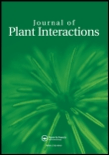
Journal of Plant Interactions
Innovating Understanding of Ecosystem DynamicsThe Journal of Plant Interactions, published by Taylor & Francis Ltd in the United Kingdom, serves as a leading open-access platform dedicated to advancing the understanding of plant interactions and their ecological implications. Established in 2005 and transitioning to open access in 2015, this journal focuses on both fundamental and applied aspects of plant interactions, providing invaluable insights for researchers, professionals, and students within the fields of Ecology and Plant Science. With a commendable impact factor and ranked in the second quartile (Q2) for both Ecology, Evolution, Behavior and Systematics and Plant Science, it reflects the quality and relevance of its published research. Researchers aiming to publish innovative studies on plant behavior and ecosystem dynamics will find a welcoming avenue for their work, as the journal is dedicated to fostering open dialogue and sharing knowledge across disciplines.

JOURNAL OF PLANT PATHOLOGY
Uncovering the Secrets of Plant DiseasesJOURNAL OF PLANT PATHOLOGY, published by SPRINGER, is a premier academic journal dedicated to advancing the understanding of phytopathology and related fields. With a strong international presence and an impact factor that reflects its influence in the scientific community, this journal offers essential insights to researchers, professionals, and students engaged in plant health. Since its inception in 1997, it has consistently provided a platform for innovative research, contributing to the Q2 rank in Plant Science as per the 2023 category quartiles. The journal covers a broad spectrum of topics related to plant diseases, their management, and the ecological impacts they pose, ensuring relevance to contemporary challenges in agriculture and sustainability. While the journal does not currently offer Open Access options, it remains a crucial resource for those looking to deepen their knowledge and bolster their research endeavors in the vital area of plant pathology.

ANNALS OF APPLIED BIOLOGY
Fostering breakthroughs in applied biological research.Annals of Applied Biology, published by Wiley, stands as a pivotal resource in the fields of Agronomy and Crop Science, boasting an impressive impact factor that reflects its significance and influence in the academic community. With a storied history dating back to 1914, this journal serves as a comprehensive platform for innovative research and applied studies in agricultural biology, specifically aimed at improving crop production and sustainable practices. Currently categorized in the Q1 quartile for Agronomy and Crop Science in 2023, it ranks an admirable 82 out of 406 in the Scopus database, placing it within the top 79th percentile of its category. Researchers, professionals, and students worldwide rely on the Annals of Applied Biology for cutting-edge insights and advancements in applied biological research, making it a vital component of the scientific discourse aimed at addressing pressing agricultural challenges. Please note that this journal does not offer open access options, thus ensuring a rigorous peer review process and the integrity of published work.
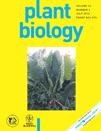
PLANT BIOLOGY
Elevating Understanding of Plant SystemsPLANT BIOLOGY is a prestigious academic journal published by Wiley, dedicated to advancing knowledge in the fields of plant science, ecology, and evolutionary biology. With an impressive impact factor and ranking in the Q1 category for Ecology, Evolution, Behavior and Systematics, and Plant Science as of 2023, it stands at the forefront of research dissemination. The journal encompasses a broad scope of plant biology topics, providing a critical platform for researchers to share innovative findings and foster interdisciplinary collaboration. Available in both print (ISSN: 1435-8603) and online formats (E-ISSN: 1438-8677), it ensures accessibility through open access options. As a crucial resource for professionals, researchers, and students alike, PLANT BIOLOGY cultivates a deeper understanding of plant systems and their ecological significance, making it an essential addition to the library of anyone dedicated to the study of biology and the environment.
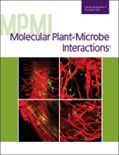
MOLECULAR PLANT-MICROBE INTERACTIONS
Advancing Knowledge in Agronomy and Plant PhysiologyMOLECULAR PLANT-MICROBE INTERACTIONS is a premier journal dedicated to the exploration of the complex interactions between plants and microbes, providing a vital platform for researchers in agronomy, crop science, and plant physiology. Published by the American Phytopathological Society, this journal has been serving the academic community since 1988 and continues to be at the forefront of advances in molecular biology and plant-microbe symbiosis, with a notable impact factor reflecting its esteemed position in the field. As a Q1 journal in both Agronomy and Crop Science and Medicine (miscellaneous), and holding a significant ranking in the Scopus categories, it is recognized for publishing high-quality, peer-reviewed research that is essential for understanding and improving agricultural practices. Although it is not an open-access journal, it provides critical insights that facilitate collaborative efforts among researchers, professionals, and students alike. The journal’s objectives focus on enhancing our understanding of plant health, disease resistance, and ecological sustainability, making it a crucial resource for anyone interested in the intricate research landscape of plant-microbe dynamics.

Zemdirbyste-Agriculture
Bridging research and practice in the heart of Lithuania.Zemdirbyste-Agriculture is a prominent journal dedicated to advancing the field of agricultural sciences, with a particular focus on agronomy and crop science. Published by the Lithuanian Research Centre Agriculture & Forestry, this open access journal has been fostering knowledge sharing and scientific discourse since 2004, allowing researchers, professionals, and students unrestricted access to its content. Located in the beautiful country of Lithuania, specifically at Vytautas Magnus University, this journal plays a significant role in disseminating innovative research findings. With a 2023 Scopus ranking of #246 out of 406 in the category of Agricultural and Biological Sciences, Zemdirbyste-Agriculture falls within the Q3 quartile, reflecting its growing influence in the academic community. This journal, which has converged its publication focus from 2008 to 2023, aims to provide a platform for scientists to share their critical insights on agricultural practices, sustainability, and technological advancements in crop science, thereby contributing to the global discourse on food security and environmental health.

Tropical Plant Pathology
Navigating the complexities of plant pathology.Tropical Plant Pathology, published by Springer, is a leading journal in the fields of Agronomy and Crop Science as well as Plant Science, as evidenced by its impressive position in the Q2 quartile rankings for 2023. This esteemed journal, with an ISSN of 1983-2052, focuses on the intricacies of plant diseases and their management, showcasing significant research that addresses challenges faced by agronomists and plant scientists, particularly in tropical environments. With a Scopus ranking of 147th in Plant Science and 116th in Agronomy and Crop Science, it is recognized for its contribution to the advancement of knowledge in these areas, which is crucial for food security and sustainable agriculture. The journal operates under a model that facilitates researchers and professionals in disseminating their work effectively, fostering an ongoing dialogue among scholars dedicated to enhancing crop health and productivity. Discover more about groundbreaking studies in plant pathology that shape the future of agriculture!

Phytopathology Research
Innovating solutions for global agricultural challenges.Phytopathology Research, published by SPRINGERNATURE, serves as a vital resource in the rapidly evolving fields of biochemistry, genetics, molecular biology, and plant sciences. Since adopting an open access model in 2019, this journal has fostered an inclusive approach to disseminating cutting-edge research and breakthroughs in plant pathology and related disciplines. With an impressive impact factor in the second quartile for Biochemistry, Genetics and Molecular Biology (miscellaneous) and Plant Science, and a robust standing in the Scopus rankings, it attracts high-quality contributions from researchers around the globe. The journal not only supports the academic community's quest for advanced knowledge but also plays a crucial role in addressing global agricultural challenges through innovative research. Positioned in the United Kingdom and operating with a keen focus on enhancing plant health and resistance, Phytopathology Research continues to be an essential platform for both established and emerging scientists in this vital area of study.
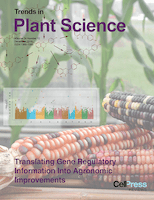
TRENDS IN PLANT SCIENCE
Empowering Researchers with Cutting-edge InsightsTRENDS IN PLANT SCIENCE is a premier academic journal published by CELL PRESS, dedicated to advancing the field of plant sciences. With an ISSN of 1360-1385 and E-ISSN 1878-4372, this journal has established itself as a critical resource for researchers and practitioners alike, boasting a remarkable impact factor that places it in the Q1 quartile for plant science in the 2023 rankings. Featuring a comprehensive scope that encompasses emerging trends, innovative research, and pivotal reviews in the plant sciences, it aims to promote interdisciplinary dialogue and encourage progressive research methodologies. Hailing from the United Kingdom, TRENDS IN PLANT SCIENCE serves a global community of over 516 journals, achieving a top-tier ranking of 3rd in the Scopus ranking for Agricultural and Biological Sciences. This makes the journal an indispensable asset for anyone aiming to keep abreast of the latest developments in plant biology and its applications. As we look towards its future converging years from 1996 to 2024, the journal continues to foster scholarly excellence and innovation in the field.
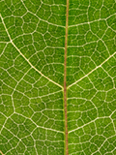
Annual Review of Phytopathology
Advancing knowledge in plant health.Annual Review of Phytopathology, published by ANNUAL REVIEWS, is an esteemed journal that has been at the forefront of the field since its inception in 1973. With a focus on both Plant Science and Medicine, the journal holds a prestigious Q1 ranking in both categories for 2023, reflecting its influence and significance in the academic community. The journal features comprehensive review articles that encapsulate significant advancements and emerging trends in phytopathology, providing valuable insights for researchers, professionals, and students alike. Its rigorous peer-review process ensures the highest quality of publication, making it essential for anyone seeking to stay informed on critical issues affecting plant health and related disciplines. With an impressive Scopus ranking of #10 out of 516 in Agricultural and Biological Sciences, Annual Review of Phytopathology remains a vital resource for the dissemination of cutting-edge knowledge, fostering innovation and collaboration within the field.